Why DIY?
All houses and buildings, recent or antiquated require maintenance. Even when maintained well, there are ample chances that problems like development of cracks, leakages etc. would emerge. When houses possess problems, you’ve two choices; you can either hire someone to do the repair work for you and trust them blindly for their skills or take up the work and do it yourself. Finding a good contractor to do minor home repairs is onerous. Even if you find a good contractor who is prompt with good building repairs and at reasonable prices, you will still have to shell out a fortune. But if you have the basic skills of fixing the home repairs, you can do it yourself and save quite a lot of money. However, for doing them you need few top-of-the-line repair tools for DIY projects of house. RS Components, Amazon, Alibaba, etc. can provide repairman tools that you need, and here are few essentials to add to your toolbox before you get stuck in.
Cracks, leakages, difficulties in operation of door and window, settlement of foundation or base-floor are the few signs of major repair that needs to be overhauled as early as possible for the long life of the house, and to protect you from future major repairs.
DIY projects for home are probably a good option if you live in an old building. Although older buildings don’t develop cracks as often as new buildings, they would still require frequent repairs simply due to their age. It is a fact of life that as things get older, due to wear and tear, they break down more often. If you don’t believe it, just keep track of your medical bills.
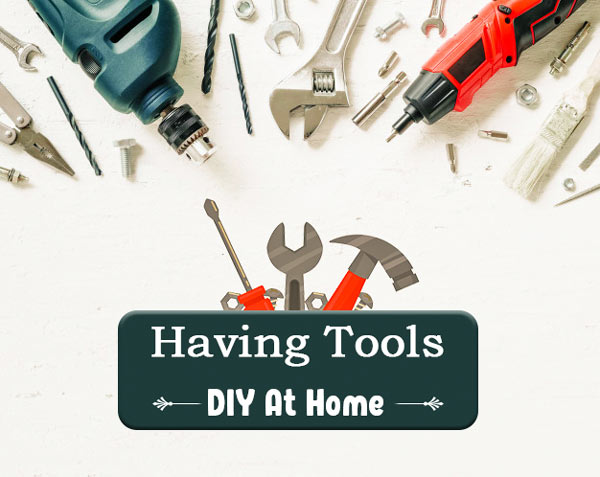
Time to Get Some New Repair Tools
There’s never a bad time to get new set of repairman tools but there are definitely times when you should get new ones; for instance; to replace an old favorite that finally bit the dust or when you’re ready to begin stocking your shop for a DIY projects for home. In addition to all the standard hammers and drills, levels, screwdrivers, wrenches, pliers, locking pliers, tape measures, utility knives, etc. are the repair tools that you need to have.
01. Standard Hammers
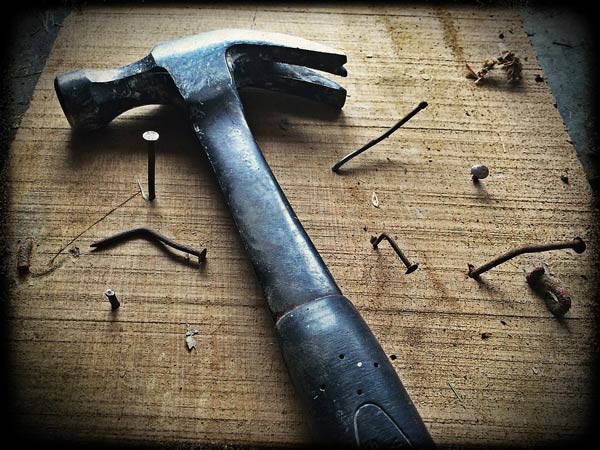
- A versatile, standard hammer (Claw head hammers – 16 Ounce or 0.45 kg) is a famous construction tool with a curved claw. Claw head hammers are the most ordinary types of hammer that we can use for general purpose like nailing, removing the unwanted nails with the claw, small demolition, or shaping the objects, etc. Just be careful to keep your fingers and thumbs out of harm’s way.
- The hammers have different shape and size. It is better to use a particular type of hammer for the particular job. i.e. narrow head hammers are used for delivering the blow on small area, and broad and heavy hammers are used for striking a wide area.
02. Lump Hammer and Bolster
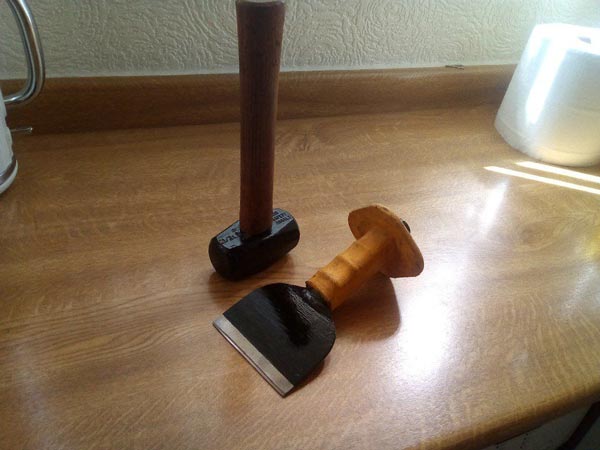
- Lump hammer (Head weight 1 to 2 kg) is used for light demolition work or to break masonry. In order to cut or break brick accurately, a steel chisel with a very wide blade is employed which is popularly known as bolster (2 to 4 inches wide).
03. Drills
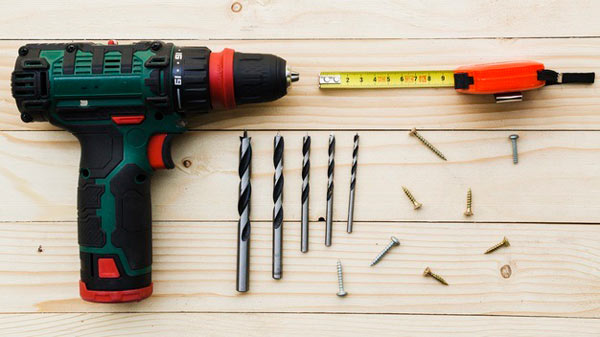
- It has been suggested that 15% of people take on all DIY projects themselves, but most of these won’t get very far without an electric drill. Drilling tools operated on power or batteries are called power drills. Power drills make repair work faster, easier, and safer. Chord-less power tools are normally operated on batteries and offers high suitability.
- Generally, drill machines are necessary for making holes on the surface that need repair which include grouting work or rebar work or any carpentry work, etc.
04. Levels (Two-Foot Level)
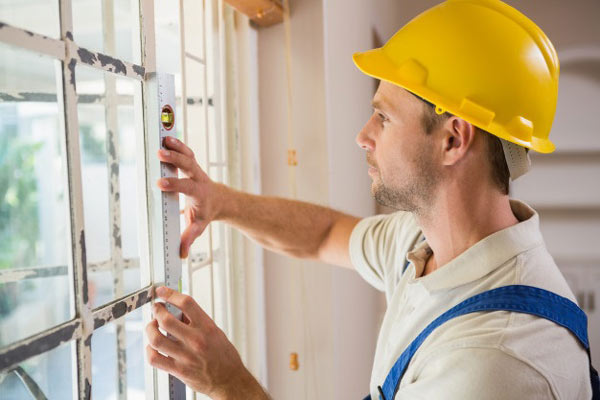
- As you know any construction work precisely require line and level. Repairman have a spirit level, or magnetic level, or a laser level which helps him to assure the level of any surface. You have to match the level of existing work while you carry out repair to restore the aesthetic view of work.
05. Screwdrivers
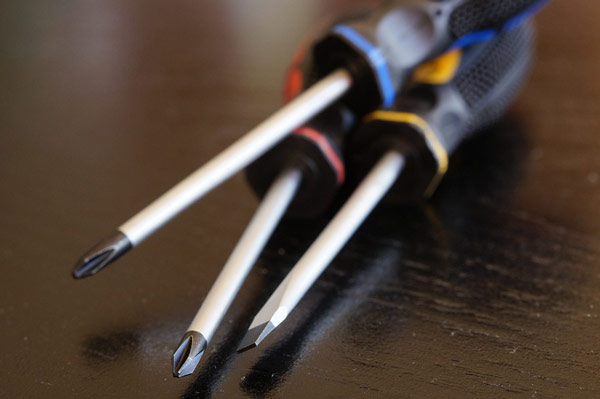
- Widely available at increasingly affordable prices, it is best to pick up a kit that includes masonry and woodwork drill bits as well as a screwdriver set, so you can switch easily between the two functions. Screwdrivers are the tools that are used to insert or remove the screw and it is operated manually or electrically.
- There are two common types of screwdrivers which include the slotted type screwdrivers (top), and the Phillips type screwdrivers.
- Generally Flat Tip 3.25, 6 mm, Philips No. – 0, 1 mm sizes of screwdrivers are very popular for the routine work. Nowadays, screwdrivers are available in set, which has many different sizes with simple attachment mechanism.
06. Wrenches or Spanners Set
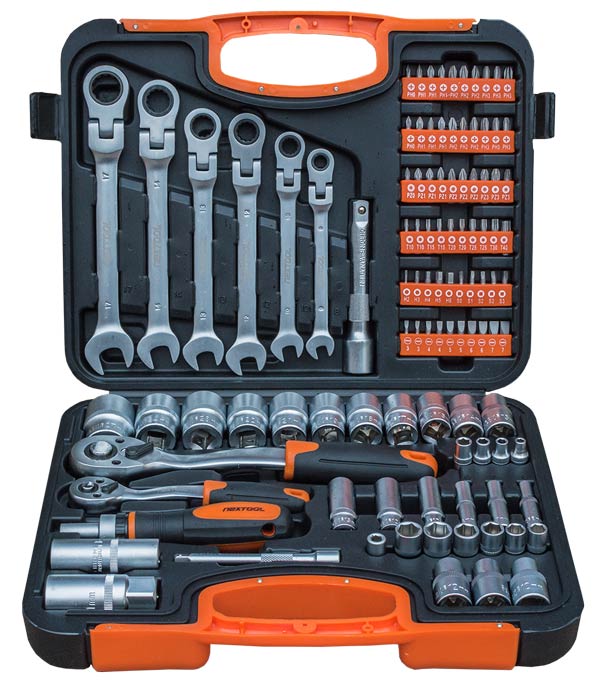
- You can use Ratchet wrenches or Open-Ended spanner for tightening or loosening the bolts and nuts. Ratchet wrench has a handle that has a mechanism where you can change sockets to work with the different sized bolts or nuts. The Open-ended spanners are also available in different size which are used to work with different sized bolts or nuts. The length of the spanner depends upon the leverage that you need to loosen and tighten the fixing you are working on.
- The sizes of Wrenches or Spanners, like 6 mm, 7 mm, 8 mm, 9 mm, 10 mm, 11 mm, 12 mm, 13 mm, 14 mm, 17 mm, 19 mm and 22 mm or combination of them are the most commonly used sizes for general repair of the house.
07. Pliers
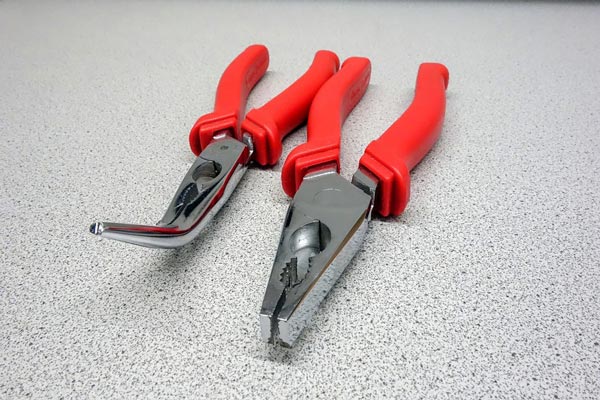
- Channel-type pliers and Needle-nose pliers are commonly available pliers in the market. Channel-type pliers are used to grip the smooth surface which needs higher gripping while repairing. Channel-type pliers have movable handles which permit the jaws to be adjusted for maximum gripping strength. The inward side of the jaws are saw-toothed that prevent slipping.
- Pointy-nose plier is also known as snipe-nose plier, or long-nose plier, or pinch-nose plier. Needle-nose pliers have very thin jaws for gripping small objects like screw, etc. It is also used to reach to confined areas where other pliers cannot reach.
08. Tape Measures
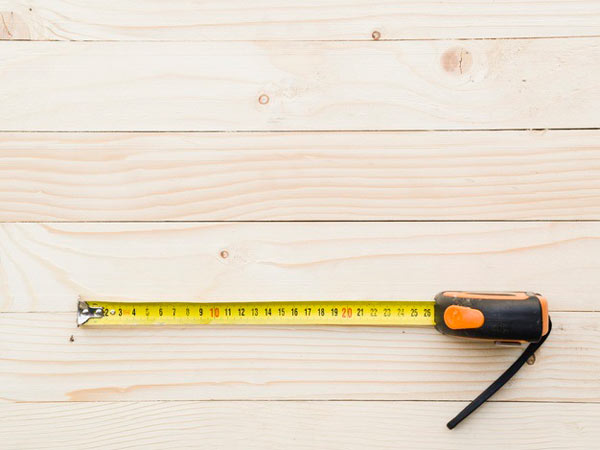
- Accurate measurements are a fundamental part of any DIY, so a tape should be right at the top of your shopping list. You need to know the area which you need to repair, or the length or width of the pipe when it comes to fixing the old gutter. Without a tape measure, you will be helpless and make costly mistakes.
- Measure tape is made of a retractable steel blade and is available in different lengths i.e. 16 feet (5 meter), 9 feet (3 meter) etc.
- Nowadays, people use laser tape which easily measures both long and short distance with the help of light rays.
09. Utility Knives
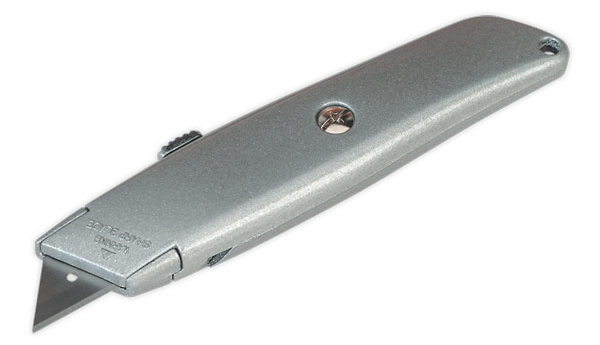
- Utility knife is also known as folding knife, Stanley knife, box cutter, X-Acto knife, etc. Utility knife has a sharp blade for cutting a wide variety of materials. The utility knife has tractable mechanism which provides safety during the repair work.
10. Chisel
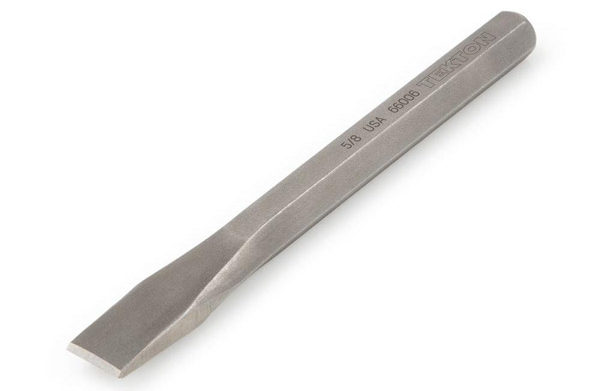
- Chisel is used to cut or chip the ceramic tile, concrete, mortar, masonry, or hardened metals during the repair work.
11. Caulk Gun
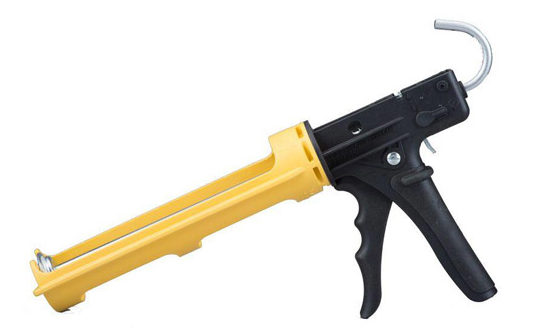
- Caulk gun facilitates to hold tubes of caulk or glue. A squeeze handle pushes a caulk or glue out of the nozzle which is used to seal joints. It is very significant tool while you repair a frame of door or window, tile joint for leak, or cracks, etc.
- For big DIY repair projects of house, you’re also going to need a repairman tools like table saw and at least one drill press from Craftsman.
12. Table Saw
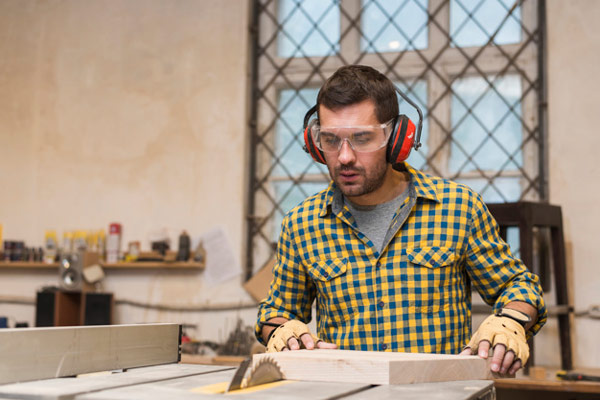
- Table saw is a very useful tool when you construct a house or carry out the DIY repair work. Table saw is a tool that is also known as saw bench or bench saw and it is operated on power. It is generally used for wood working, cutting of plastic and thin metal sheets, etc.
13. Drill Press
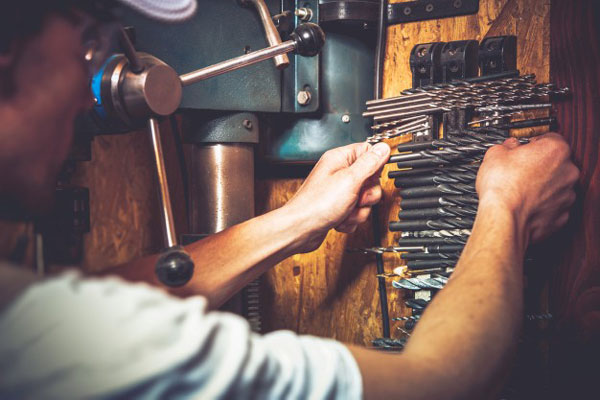
- A drill press, either on a stand or on the bench, can reliably drill holes in plastic, wood, aluminum, steel, and in many other materials. A drill press can give you the kind of precision and control you need in order not to waste time and material. It should have easy to use knobs to dial in exactly how deep you need to drill and at what angle. A variable-speed motor with which you can adjust the RPMs isn’t necessarily a requirement, per sé, but it is always better if it is there.
- When you’re doing repeat drilling on identical pieces – doors, windows, cabinets – a good drill press can save hours of your time. Plus, you’ll know that the results are the same for each and every hole you cut. Doing it by hand would take much longer and there will always be a little bit of play in the angle and/or depth from one hole to the next. A drill press eliminates all of that uncertainty.
Fix the House Problems with Repairing Tools
01. Foundation Related Repairs
Faulty foundation is the first major problems that has a huge cost of repairing. A bad Foundation, or the foundation that has had the ground eroded from beneath it, will create cracks in house. In fact, cracks are one of the main signs of a faulty foundation. A faulty foundation is not only responsible for cracks but it also causes problems like doors won’t open or shut all the way, cabinets drawers will stick if one side or the other has been pinched. Periodically, pipes will break loose from their moorings or from each other, door and window jambs will pop out or become misaligned. The repairing list goes on and on.
02. Sequences of Work
Repairing the foundation should always be your first priority. When you begin your repairs, start on the items closest to the foundation and work your way upward, fixing each problem in turn. That way each thing you fix or repair can potentially become the groundwork for the next higher item you have to fix. However, prepare your entire plan for any DIY project, before you start repair work.
03. Wall Related Repairs
Repairing of cracked baseboards and walls should become your second priority. Cracked baseboards and walls should be repaired, straightened, and strengthened before trying to fix the window frames and casements. The same logic applies to doors and door frames. Once the walls are finished, then you can begin working on the cabinets, such as in the kitchen, which may be attached to the walls.
04. Ceiling and Roof Related Repairs
The next step up is the ceiling, and finally the roof. If you have two or more floors in your house or building, repeat the process on each floor as you proceed upward. Lastly, of course, fix the roof.
Store the Repair Tools for Next Time
Doing your own repair work yourself means having all the tools that you need and storing them where they are readily accessible for next time, because with houses and buildings, there will always be a next time. Keep your tool kit away from moisture to prevent rusting and out of reach of children.In this article, we have listed out the essential tools required for fixing the common home repairs. We hope it gives you a gross idea on preparing your shopping list for DIY projects. However, the list is not exclusive and you may add any other repairman tool that you find useful in your tool kit. Having a personal set of repairman tools and learning the skills of fixing house repairs would save time and money. Hence, if you plan to work on DIY project of house, make enough provisions for repair tools and choose the repair materials wisely which require less maintenance.
